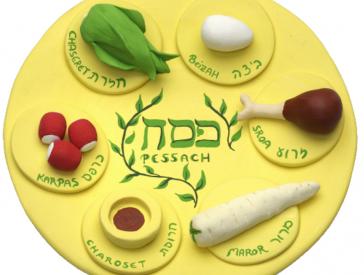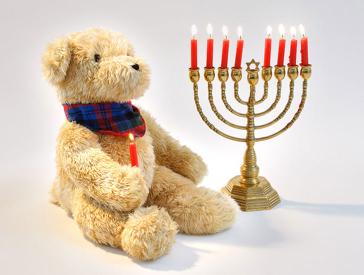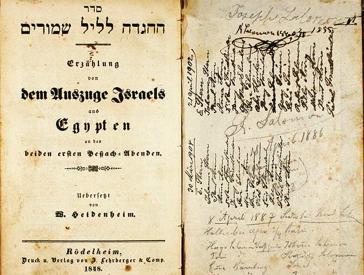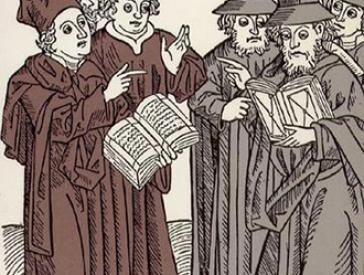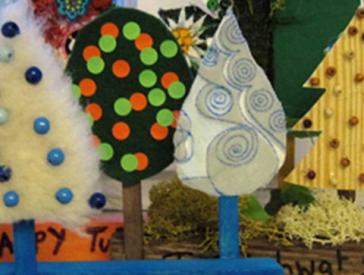Die lange Nacht des Tikkun
Oder was wir von liebenden Frauen lernen können
Vor Kurzem entdeckten wir beim Stöbern im Netz, dass drei junge Jüdinnen eine Gruppe gegründet haben, die sich „für die Vielfalt an unterschiedlichen Facetten jüdischer Identität und … ein sinnstiftendes jüdisches Leben in Berlin“ einsetzen möchte. Sie nennt sich Hamakom (hebräisch: „der Ort“) und will unter anderem die Begegnung von Israelis und jüdischen Deutschen fördern. Als erste Veranstaltung führt diese Gruppe nun einen Tikkun lel Schawuot zum Thema „Frauen & Liebe“ durch.
Der Veranstaltungsname ist Programm: Er knüpft an die Tradition an, in der Nacht zu Schawuot bestimmte biblische Texte und deren Auslegungen zu studieren und zu diskutieren. Diese Wahl zeigt, welche Bedeutung das Fest in diskursiv angelegten jüdischen Selbstverständigungsprozessen hat.
Schawuot ist ein Feiertag von ungewöhnlich vielfältiger Bedeutung, der in jeder Epoche neu entdeckt und definiert wurde. Ursprünglich war er dem Beginn der Erntezeit gewidmet, die eine Pilgerreise in den Jerusalemer Tempel umfasste. Dort brachte man Erstlingsfrüchte und zwei Weizenbrote dar. Im Talmud gilt Schawuot als das Fest, an dem das Volk Israel die Tora empfing. Um sich auf diese Gabe vorzubereiten, wird der Feiertag hier auch als Azeret beschrieben, eine feierliche Versammlung, die vor allem eine Nacht des gemeinsamen Nachdenkens und Diskutierens währt. Das Tikkun lel Schawuot, wie dieses nächtliche Symposium im Hebräischen heißt, bedeutet wörtlich übersetzt: „die Verbesserung in der Nacht des Wochenfests“. Es wurde zum ersten Mal im kabbalistischen Sohar-Buch erwähnt und gewann im 16. Jahrhundert an Bedeutung.
 X
X
Jakob Steinhardt, Illustration zum Buch Rut, 1955-1959, Holzschnitt; Jüdisches Museum Berlin, Inv.-Nr. VAR 95/10/370, Schenkung von Josefa Bar-On Steinhardt, Naharyia, Israel
Die jüdische Version des gemeinsamen Studierens und Diskutierens unterscheidet sich von ihrem griechischen Pendant, denn das Tikkun lel Schawuot kreist vor allem um die Lektüre der hebräischen Bibel, des Talmud und des Sohar. Wer mit dem Wort „Symposium“ also den platonischen Dialog und das Gastmahl assoziiert, missversteht zwar den Charakter der nächtlichen Versammlung, liegt aber dennoch im Trend: Denn das Spektrum des Tikkun wurde in jüngster Zeit deutlich erweitert, so dass diese Tradition nun auch im progressiven Judentum, ja selbst in säkularen Kreisen gepflegt wird.
Diese Entwicklung mag unter anderem auf das biblische Buch Rut zurückzuführen sein, das an Schawuot gelesen wird. Es erzählt, wie das Thema des kommenden Tikkun lel Schawuot in Berlin unterstreicht, von weiblicher Solidarität. Im Zentrum des Buchs stehen Noomi, eine israelitische Frau, und ihre Schwiegertochter Rut, die dem Volk Moab angehört. Nachdem Noomis Sohn – Ruts Mann also – gestorben ist, folgt diese ihrer Schwiegermutter mit den Worten:
„Wo du hingehst, da will ich auch hingehen; wo du bleibst, da bleibe ich auch. Dein Volk ist mein Volk, und dein Gott ist mein Gott“ (Rut 1:16).

Jakob Steinhardt, Ruth und Noemi, Druckgrafik aus der Mappe Biblical Woodcuts; Jüdisches Museum Berlin, Inv.-Nr. 2013/73/4, Schenkung von Josefa Bar-On Steinhardt, Nahariya, Israel. Mehr zu diesem Objekt erfahren Sie in unseren Online-Sammlungen
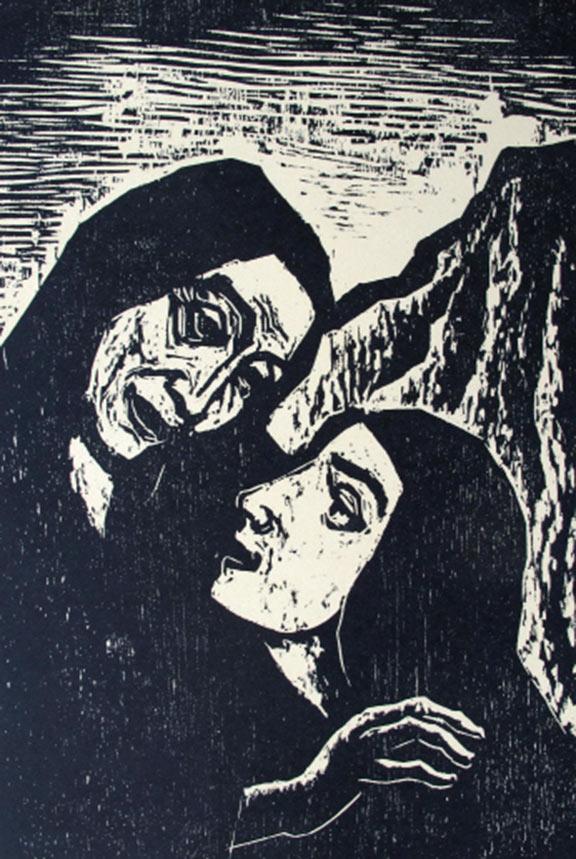 X
X
Jakob Steinhardt, Ruth und Noemi, Druckgrafik aus der Mappe Biblical Woodcuts; Jüdisches Museum Berlin, Inv.-Nr. 2013/73/4, Schenkung von Josefa Bar-On Steinhardt, Nahariya, Israel. Mehr zu diesem Objekt erfahren Sie in unseren Online-Sammlungen
Der israelische Künstler Adi Nes widmete dieser Geschichte im Jahr 2007 ein Werk, das Teil eines Zyklus zu biblischen Figuren ist. Noomi und Rut werden hier beim Sammeln von übriggebliebenen Zwiebeln im armen Süden von Tel Aviv gezeigt und mit marginalisierten Gruppen im sozialen Gefüge Israels assoziiert.
Dass die nicht-jüdische Rut in der Bibel ohne Weiteres im israelitischen Bethlehem aufgenommen wird und König David, aus dessen Haus einst der Messias stammen soll, einer ihrer Nachfahren ist, stellt eine außergewöhnliche Öffnung gegenüber dem Fremden dar. Es wäre schön, wenn diese biblische Geschichte von weiblicher Solidarität und gesellschaftlicher Integration eines Tages den Sprung von der langen Nacht des Tikkun in den heutigen Alltag schaffen könnte.
Mirjam Wenzel und Avner Ofrath, Medien
 X
X
Adi Nes, Rut und Noomi, 2007; Adi Nes 2007, gezeigt in diesem Beitrag mit freundlicher Genehmigung des Künstlers
Zitierempfehlung:
Mirjam Wenzel, Avner Ofrath (2013), Die lange Nacht des Tikkun. Oder was wir von liebenden Frauen lernen können.
URL: www.jmberlin.de/node/6995
Feiertage: Alte Riten, neue Bräuche (19)








